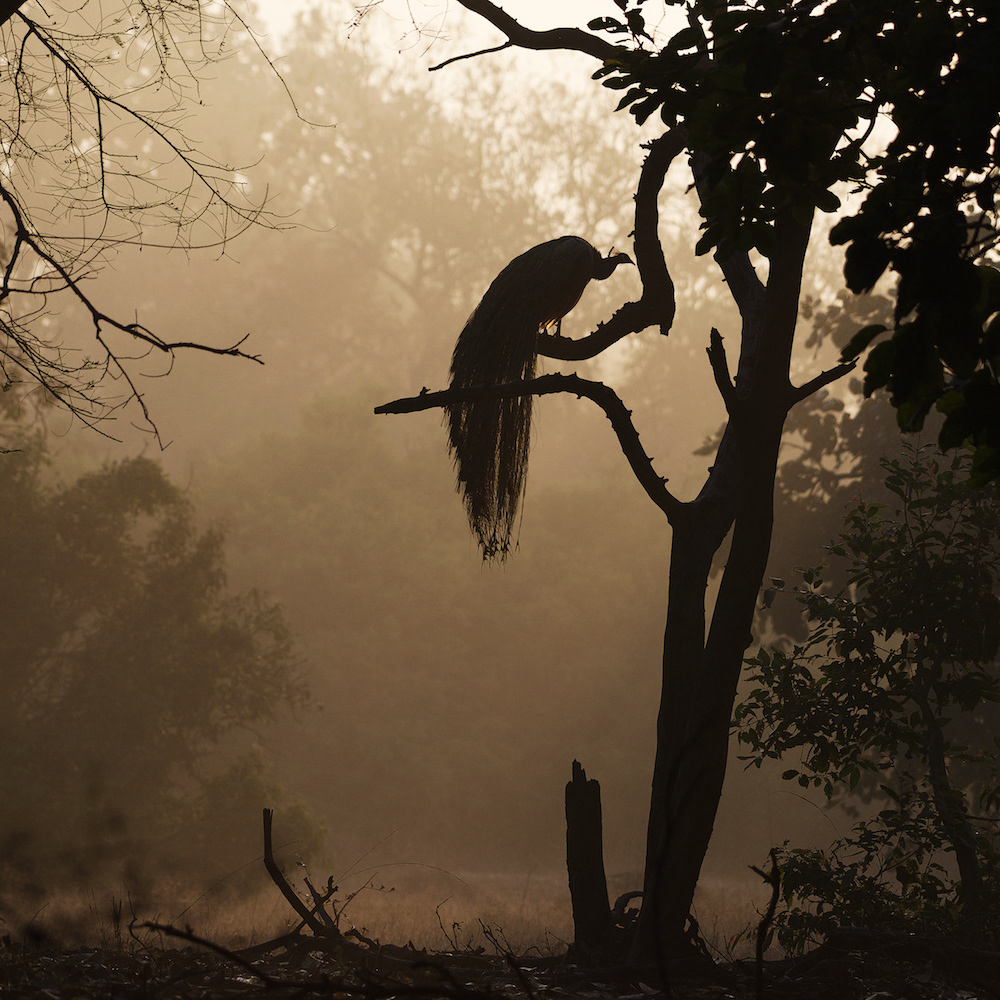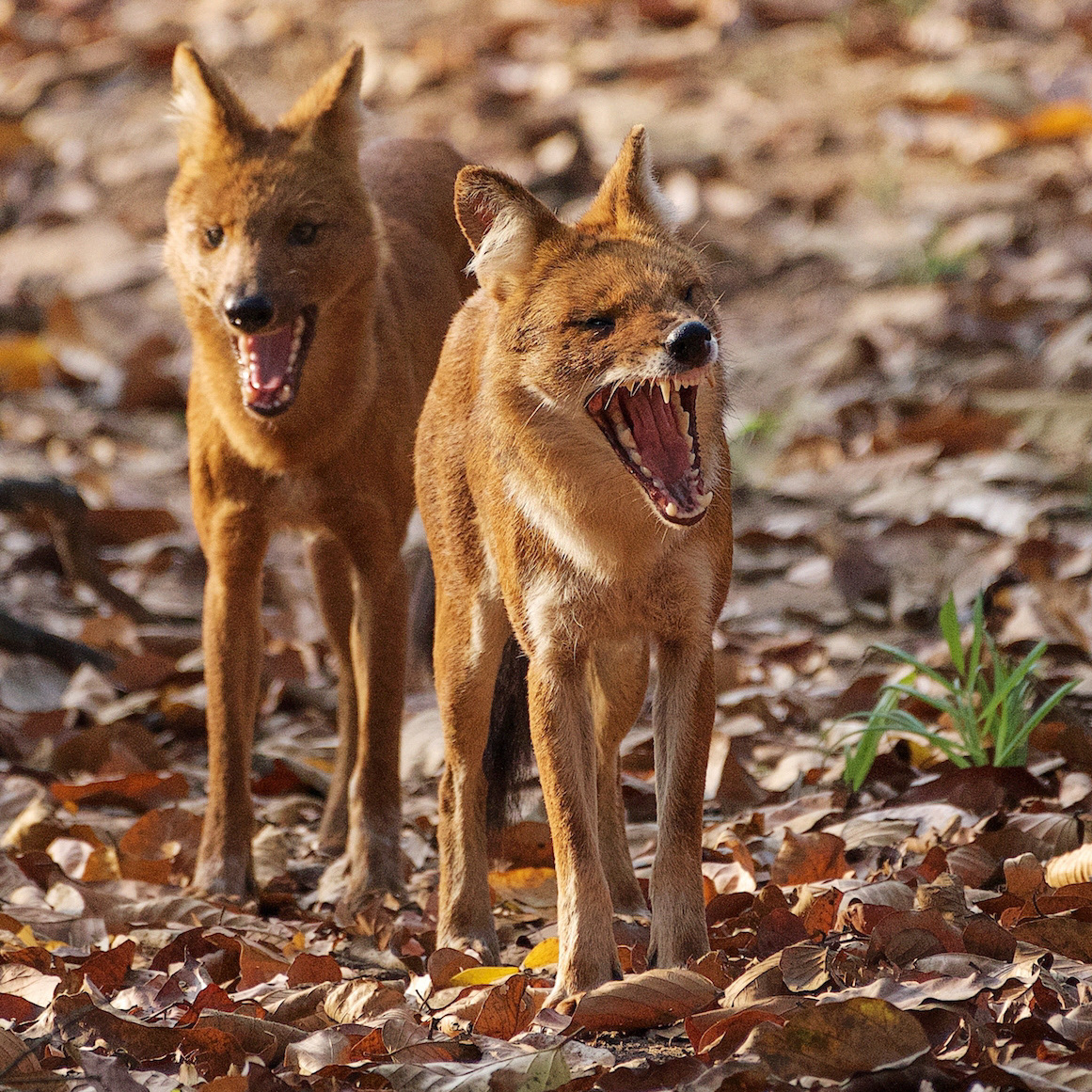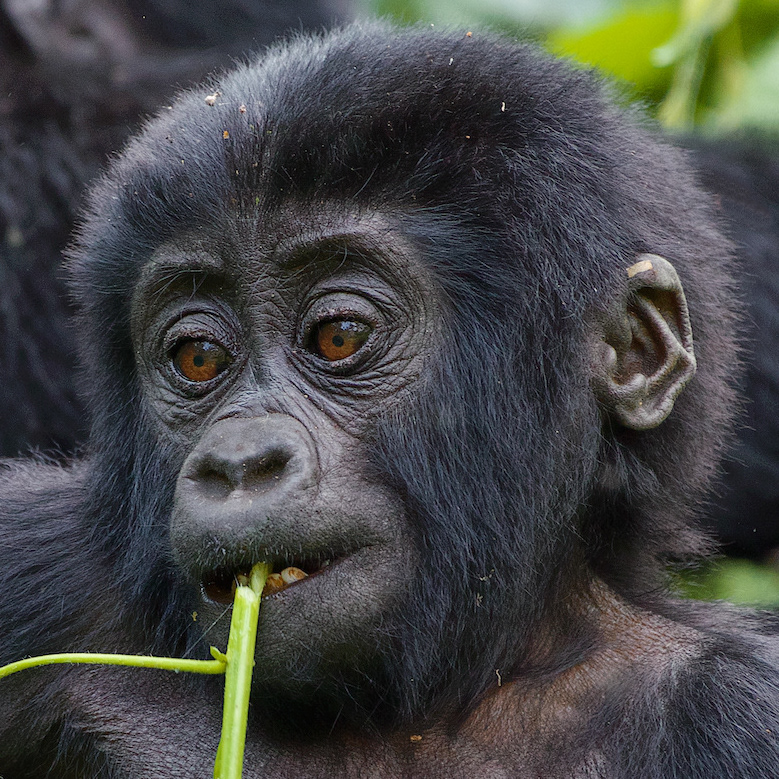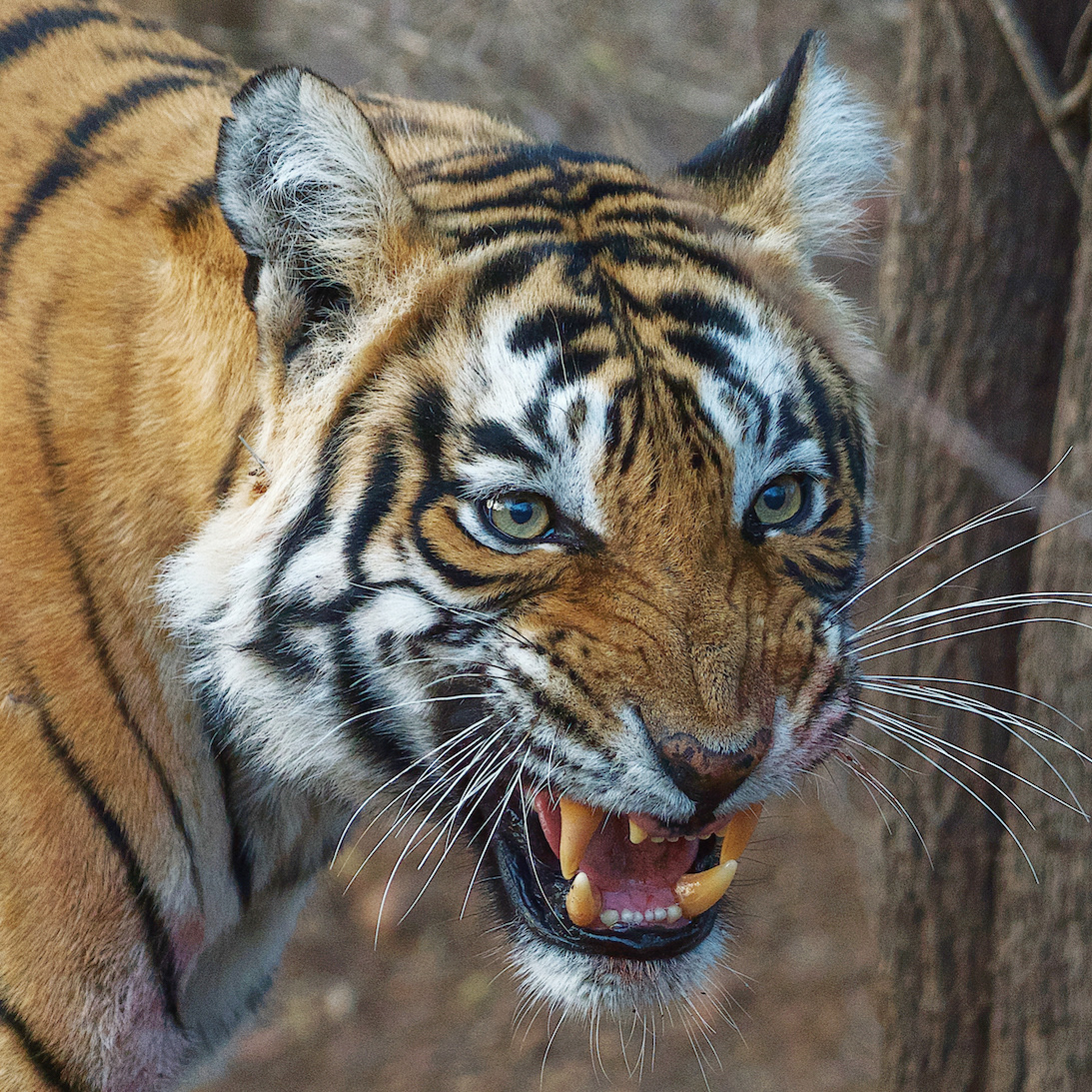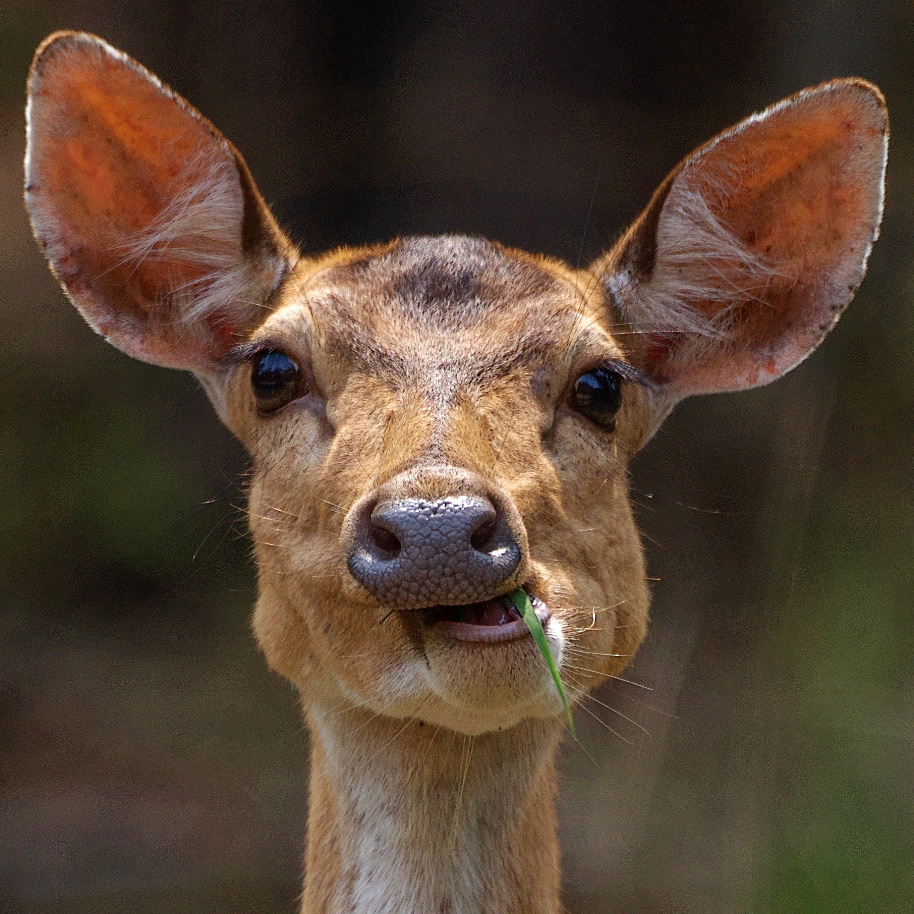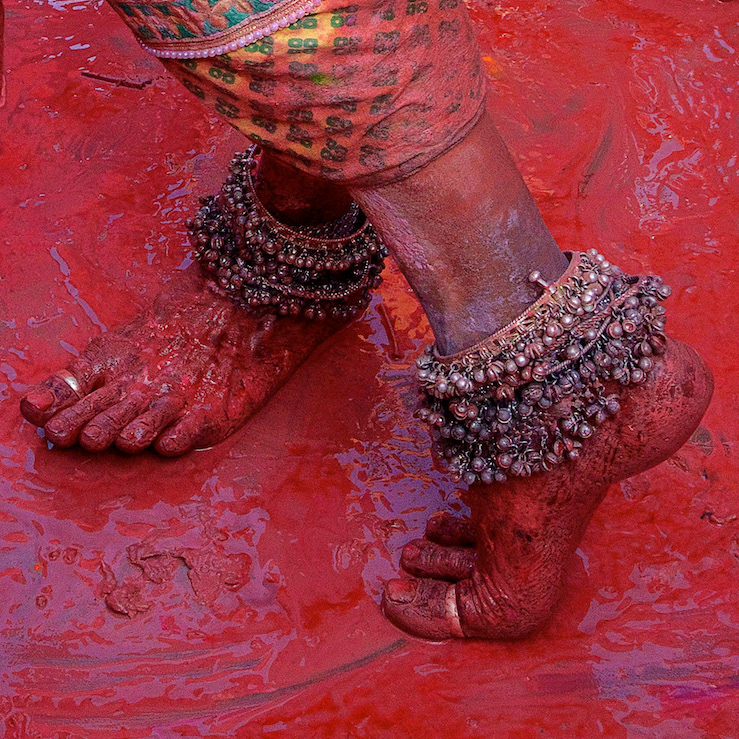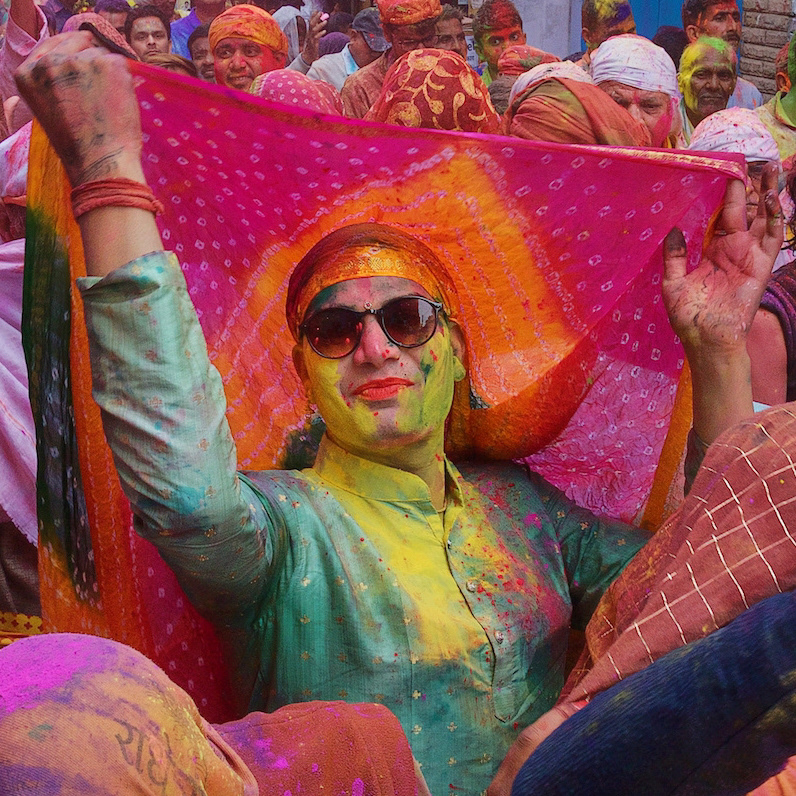Wildlife
PENCH NATIONAL PARK
Madhya Pradesh - India
The beautiful Pench National Park is in the Indian state of Madhya Pradesh in central India. The park takes its name from the Pench river which flows through the middle of the park. The southern part of the park crosses the state border into the state of Maharashtra. Pench was declared a wildlife sanctuary in1965 and became a National Park in1975 and the Tiger Reserve was formed under the Project Tiger scheme in November 1992.
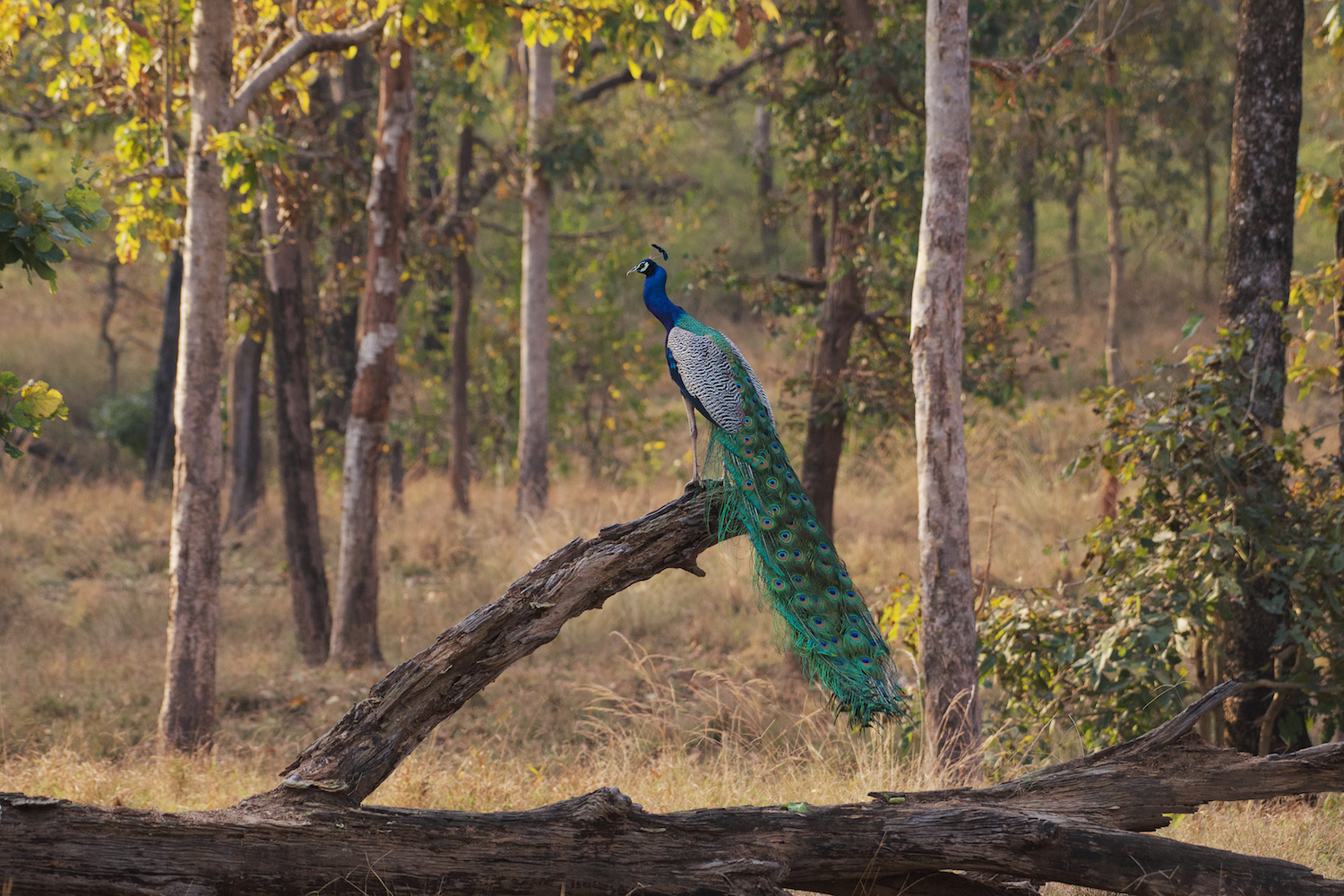
Peacock (Pavo cristatus)

Rose-ringed parakeet (Psittacula krameri)

Bengal Tiger (Panthera tigris tigris)
We visited Pench National Park in March 2024 and stayed at Pench Jungle Camp. Our 12 game drives presented us with some wonderful sightings. Many thanks to everyone at the lodge for their kind hospitality and special thanks to our excellent driver and naturalist, Samrad Godambe.
The Indian Leopard (Panthera pardus fusca) is very difficult to spot, they are agile and very elusive. They have a beautiful spotted coat and large piercing eyes. The spots, or rosettes, break up their body outline helping to camouflage them in their forest habitat.
Yawning increases blood flow to the head, oxygenating and cooling the brain. This, in turn, makes the animal more alert, particularly when it's feeling sleepy.
Leopards have extremely long whiskers known as vibrissae. These are highly specialised hairs which are found around the muzzle, eyebrows and cheeks. The whiskers are ultra sensitive and enable them to detect information about their environment through touch, or vibrations in the air.
Leopard moving stealthily through the forest.
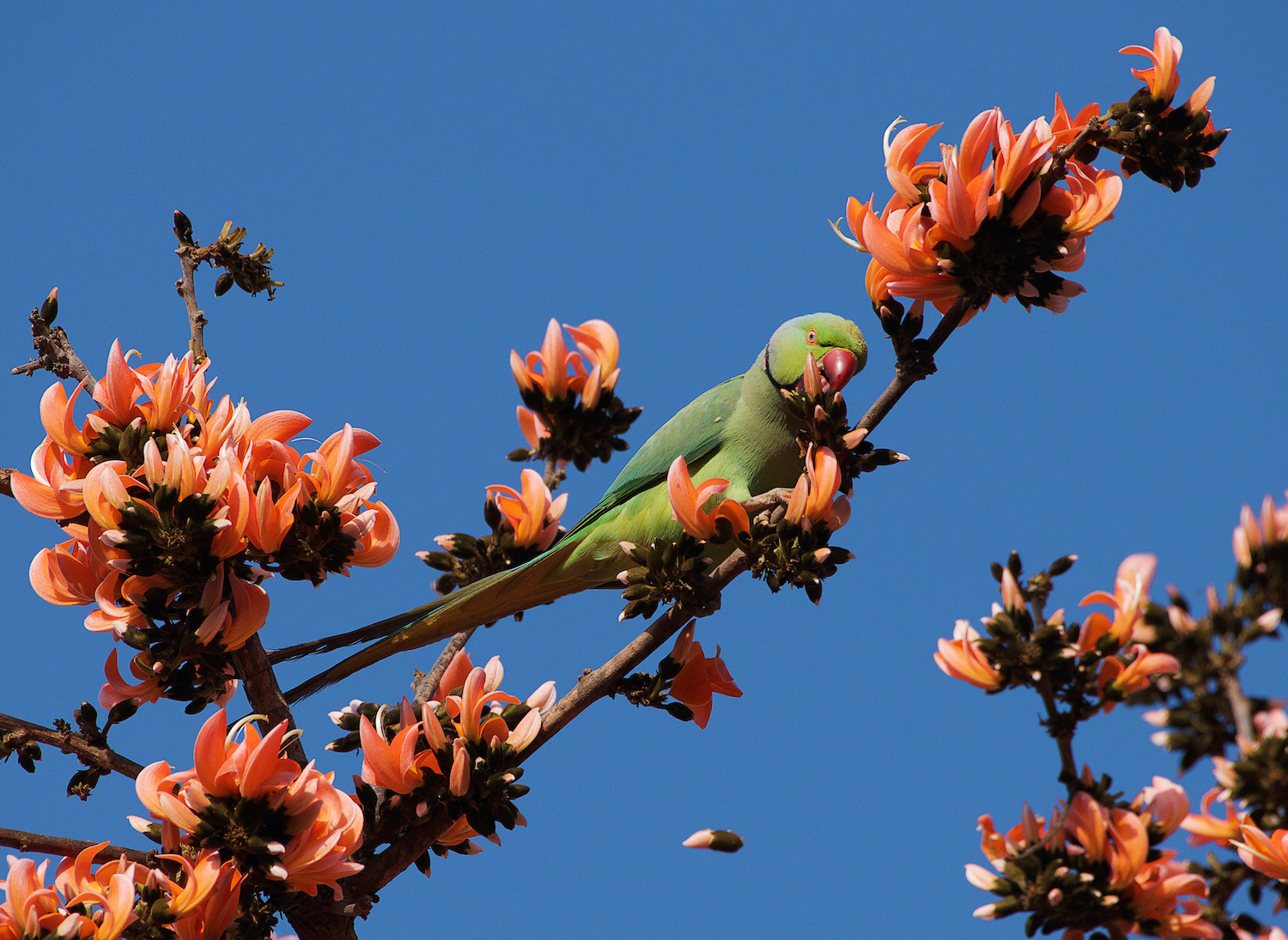
Rose-ringed parakeet (Psittacula krameri)

Rose-ringed parakeet (Psittacula krameri)
Rose-ringed Parakeet (Psittacula krameri) feeding on a Flame of the Forest tree (Butea monosperma).
A Juvenile Changeable Hawk-eagle (Nisaetus cirrhatus) calling out, whilst gripping its prey in its talons.
Juvenile Changeable Hawk-eagle (Nisaetus cirrhatus)
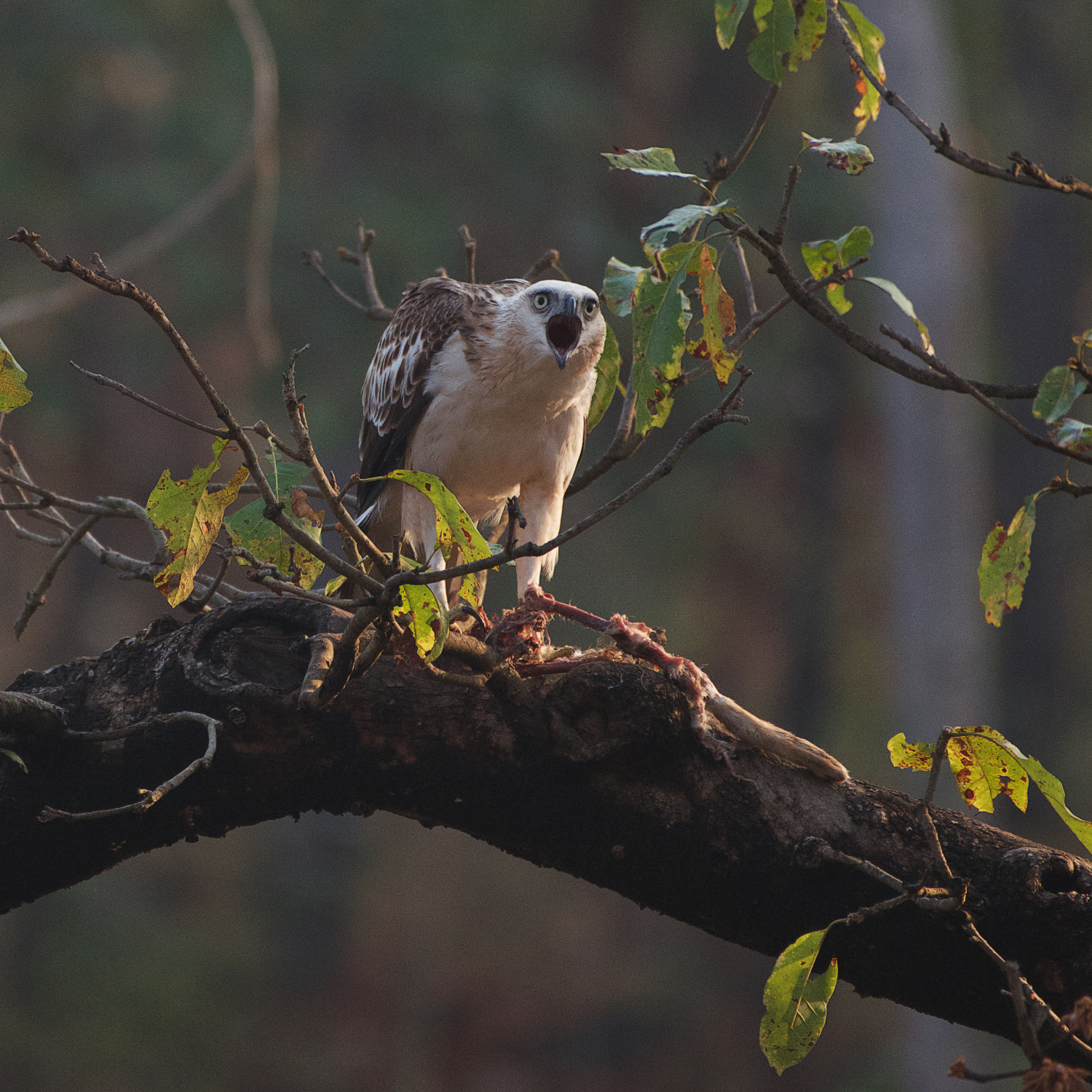
Juvenile Changeable Hawk-Eagle (Nisaetus cirrhatus)
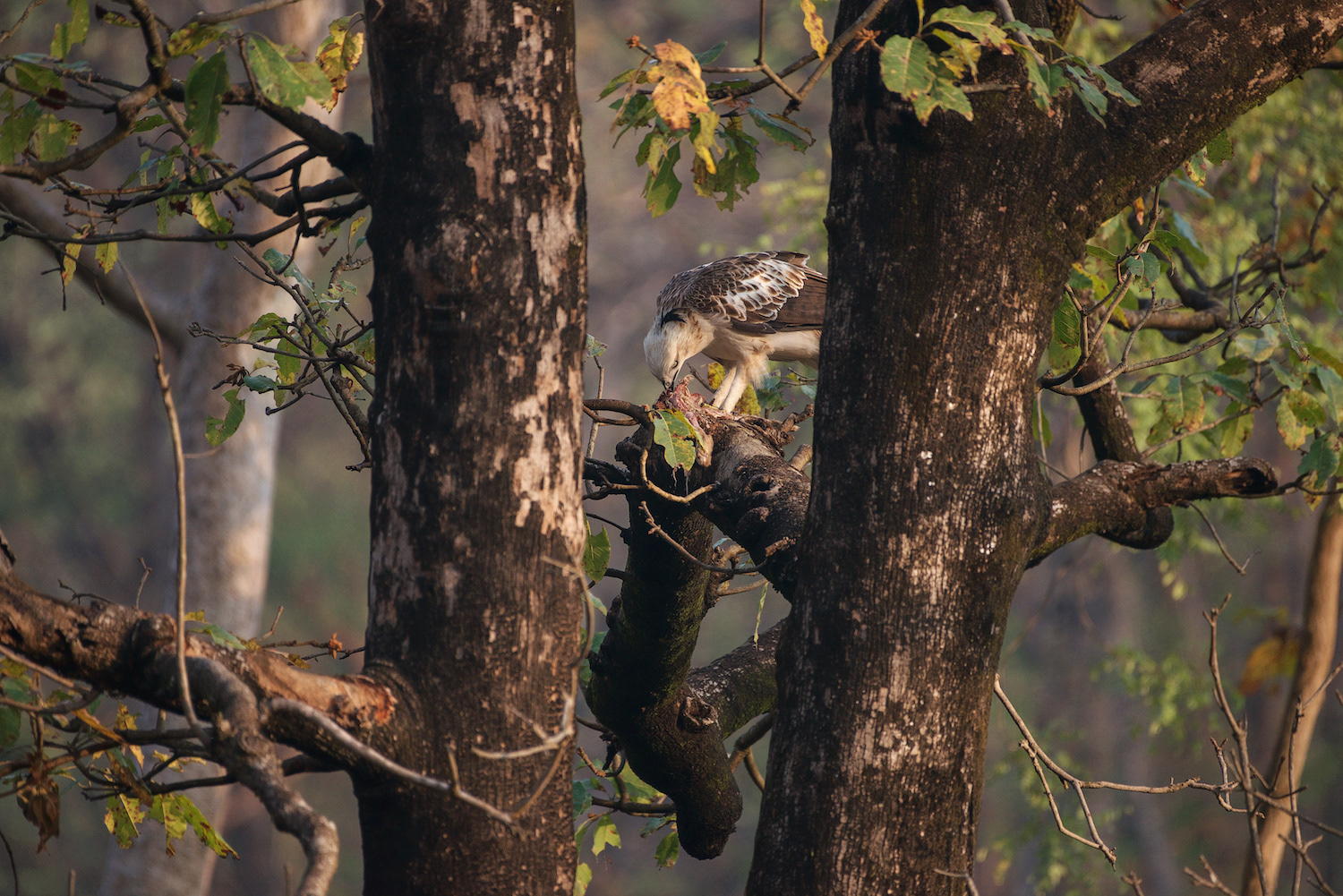
Juvenile Changeable Hawk-Eagle (Nisaetus cirrhatus)

Juvenile Changeable Hawk-Eagle (Nisaetus cirrhatus)
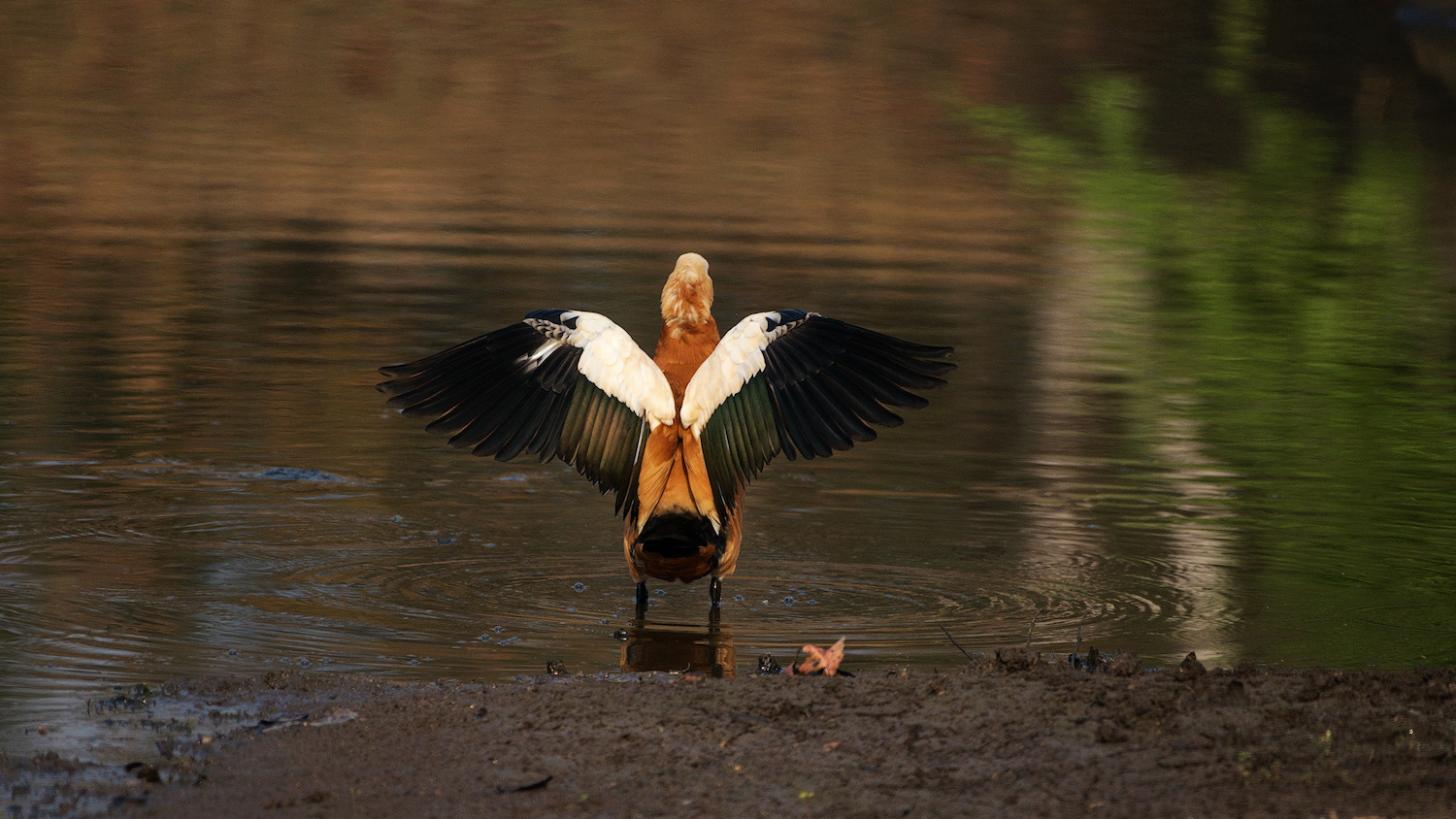
Ruddy Shelduck (Tadorna ferruginea)

Ruddy Shelduck (Tadorna ferruginea)
Ruddy Shelduck (Tadorna ferruginea) known in India as the Brahminy Duck, is a common winter visitor in India. It arrives by October and departs by April.
Lesser Golden-backed Woodpecker (Dinopium benghalense)
Bengal Tiger (Panthera tigris tigris) jumping over a stream.
Bengal Tiger resting in the long grass.
Hanuman Grey Langur (Semnopithecus entellus)

Hanuman Grey Langur (Semnopithecus entellus)
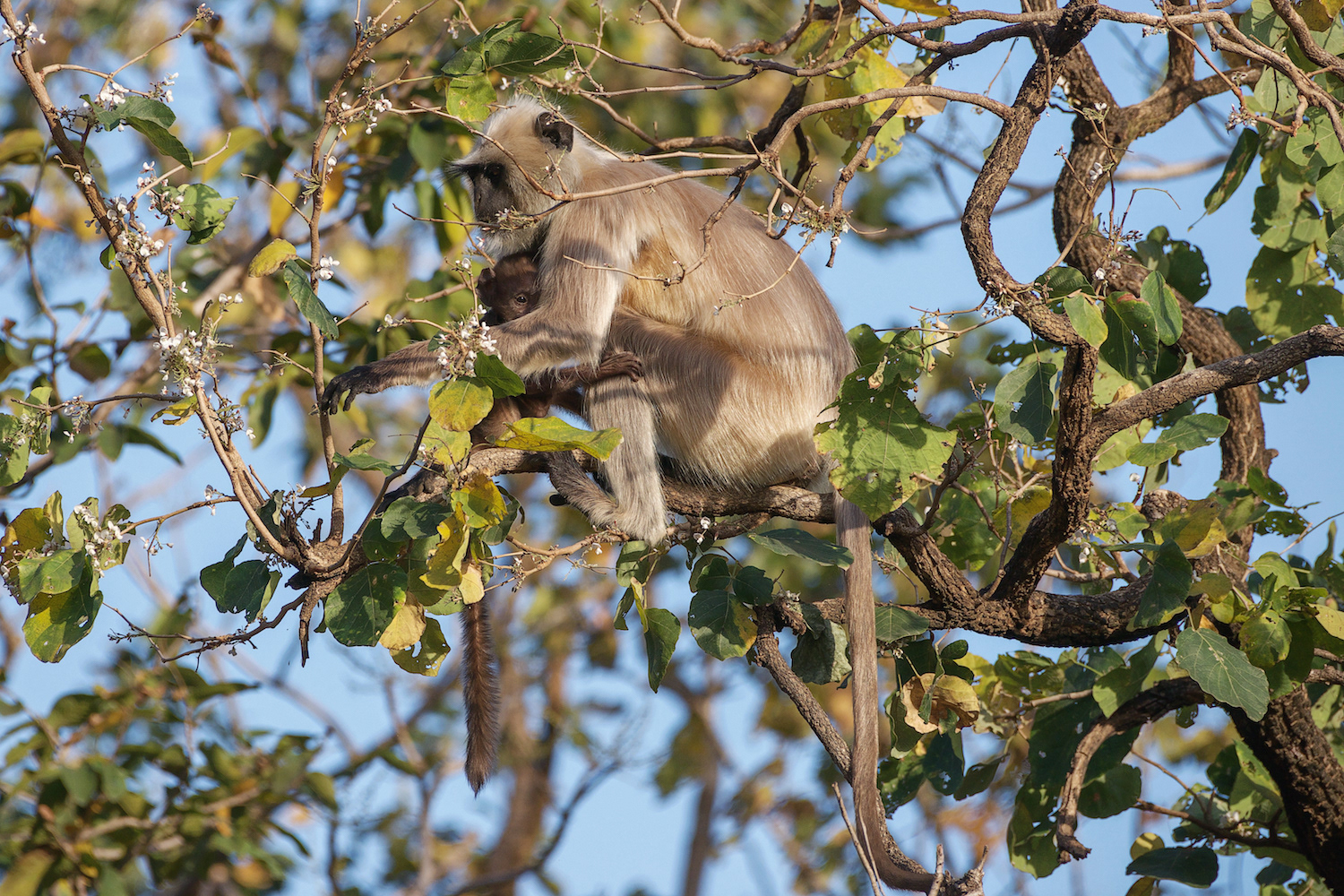
Hanuman Grey Langur (Semnopithecus entellus)
Langur mother, sitting in a tree, feeding on flower petals, with her baby between her legs.
Bengal Tiger (Panthera tigris tigris)
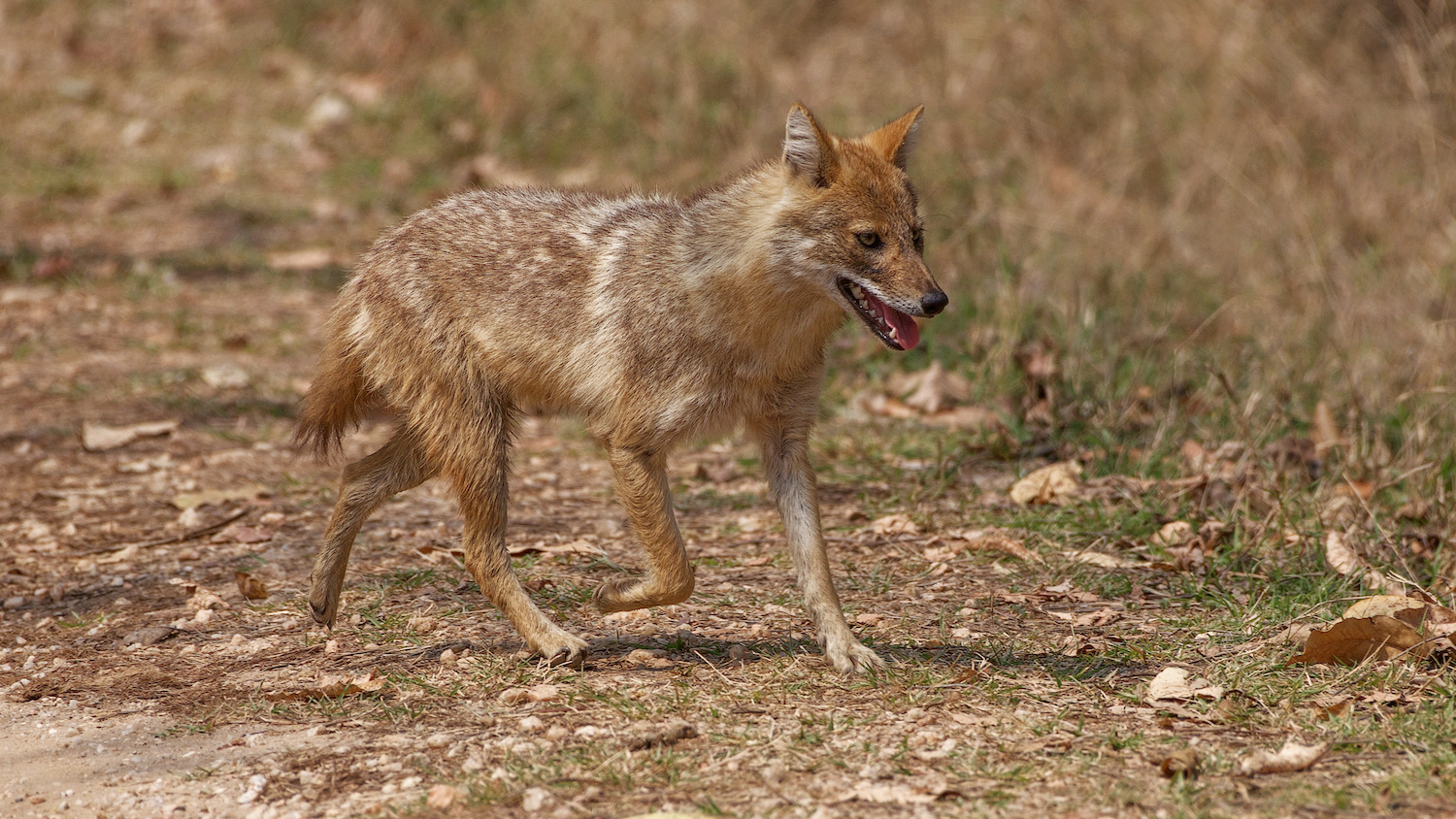
Indian Jackal (Canis aureus indicus)

Indian Jackal (Canis aureus indicus)
Indian Jackal (Canis aureus indicus) standing high on a rock overlooking the lake.
The Indian Jackal is one of seven subspecies of the Golden Jackal.
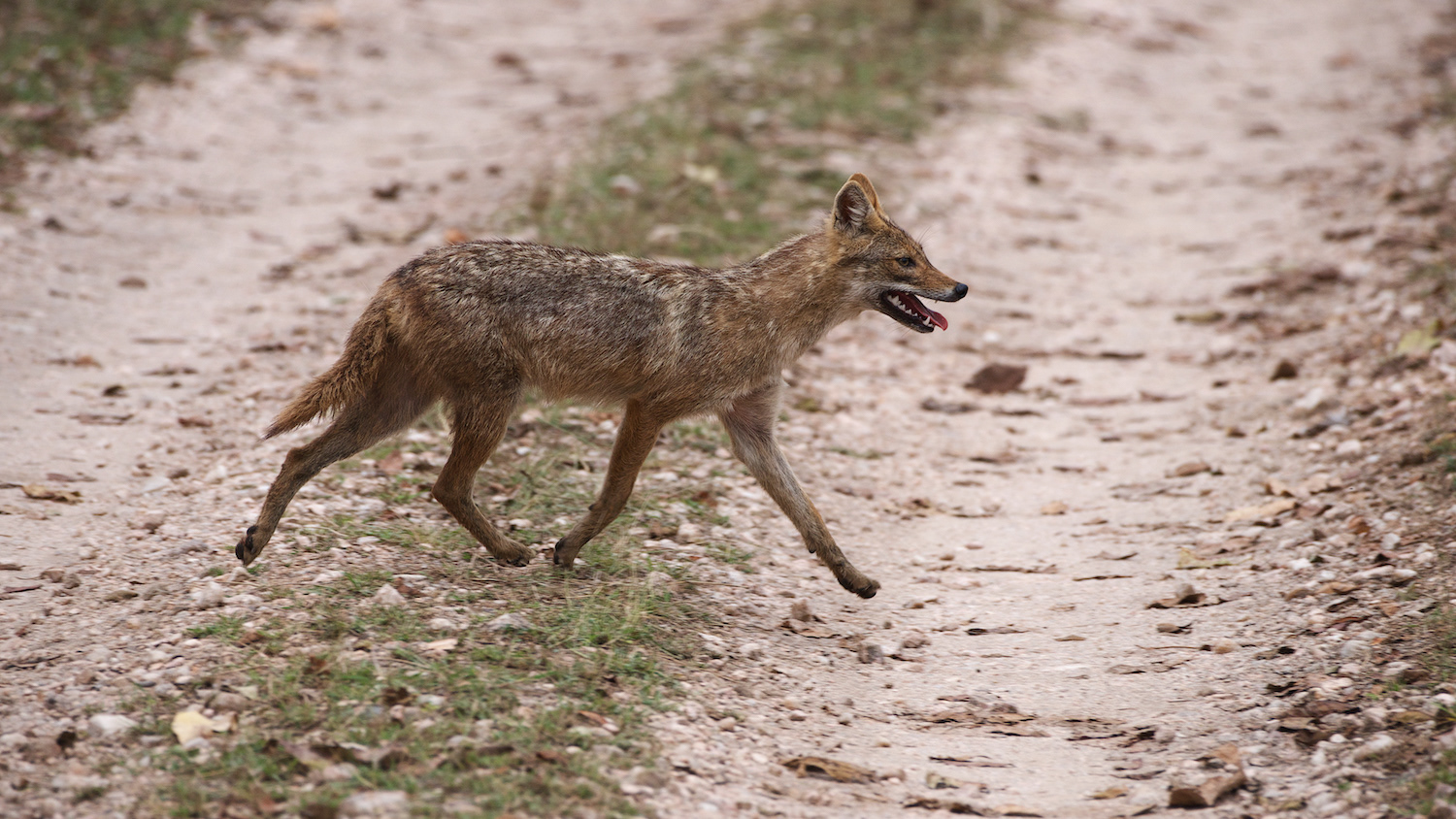
Indian Jackal (Canis aureus indicus)

Indian Jackal (Canis aureus indicus)
Chital (Axis axis) also known as the spotted deer.
Dhole (Cuon alpinus) or Indian Wild Dog
Indian Leopard (Panthera pardus fusca)
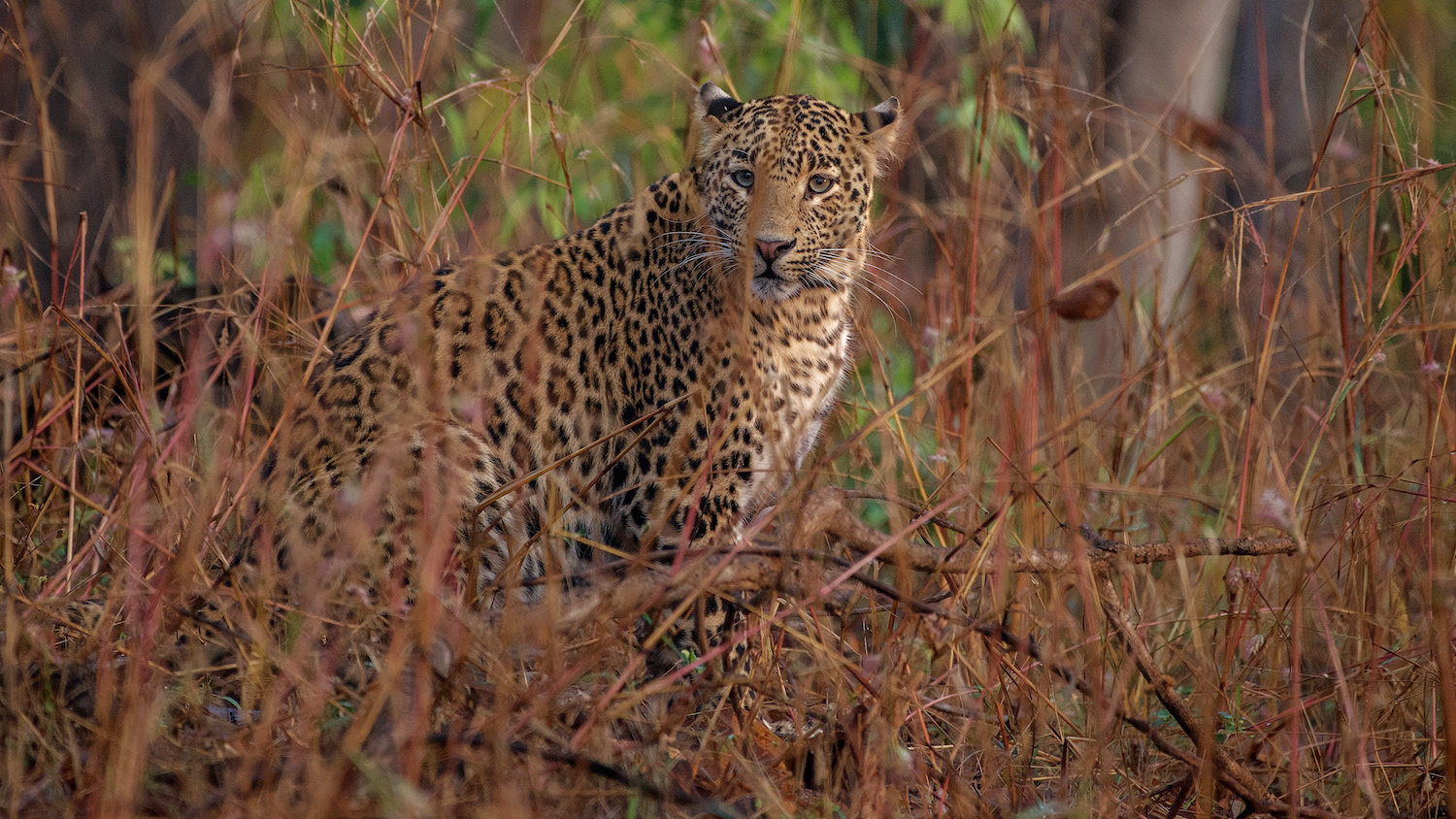
The Indian leopard (Panthera pardus fusca)

The Indian leopard (Panthera pardus fusca)

The Indian leopard (Panthera pardus fusca)
The Leopard is well-camouflaged in its dense forest environment.
Leopards have 32 teeth, four of which are very long and pointed canine teeth used for killing prey, The other teeth are used for cutting flesh and grinding bone.
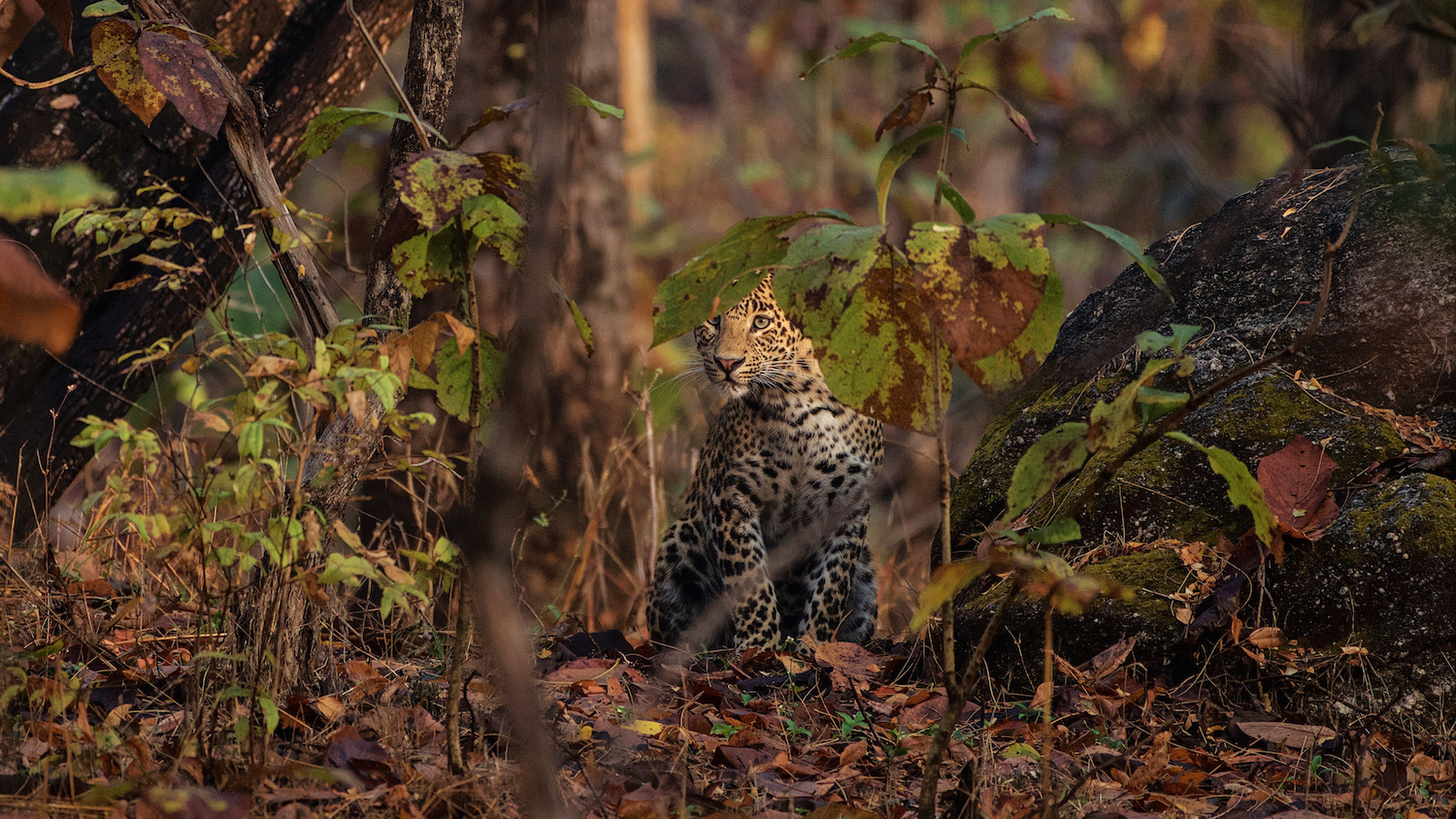
Indian Leopard (Panthera pardus fusca)

Indian Leopard (Panthera pardus fusca)
The Indian Bison or Gaur (Bos gaurus) is the largest of all wild cattle in the world. Bulls are dark brown or blackish in colour, cows and the young are a reddish brown.
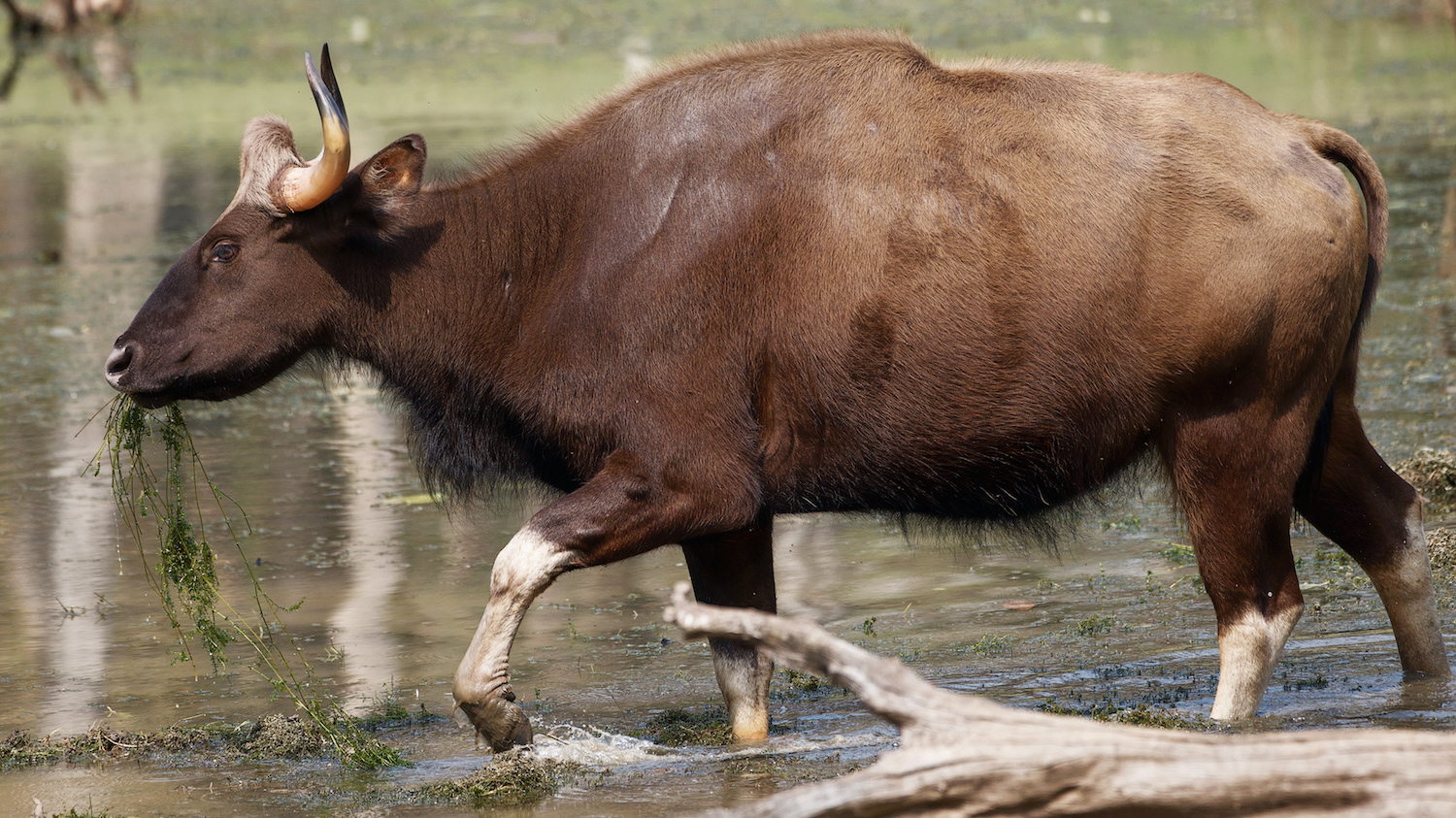
The Indian Bison or Gaur (Bos gaurus)
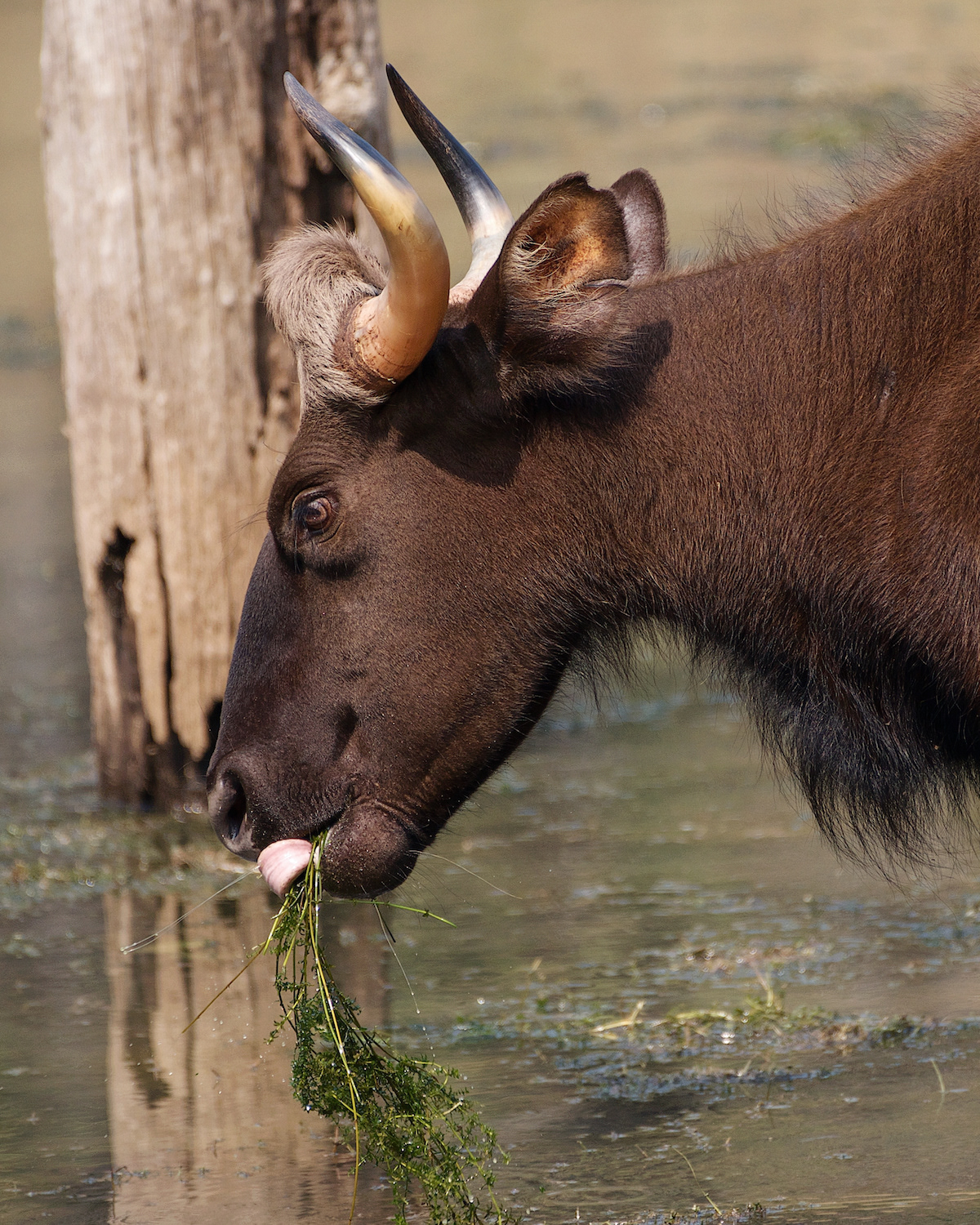
The Indian Bison or Gaur (Bos gaurus)
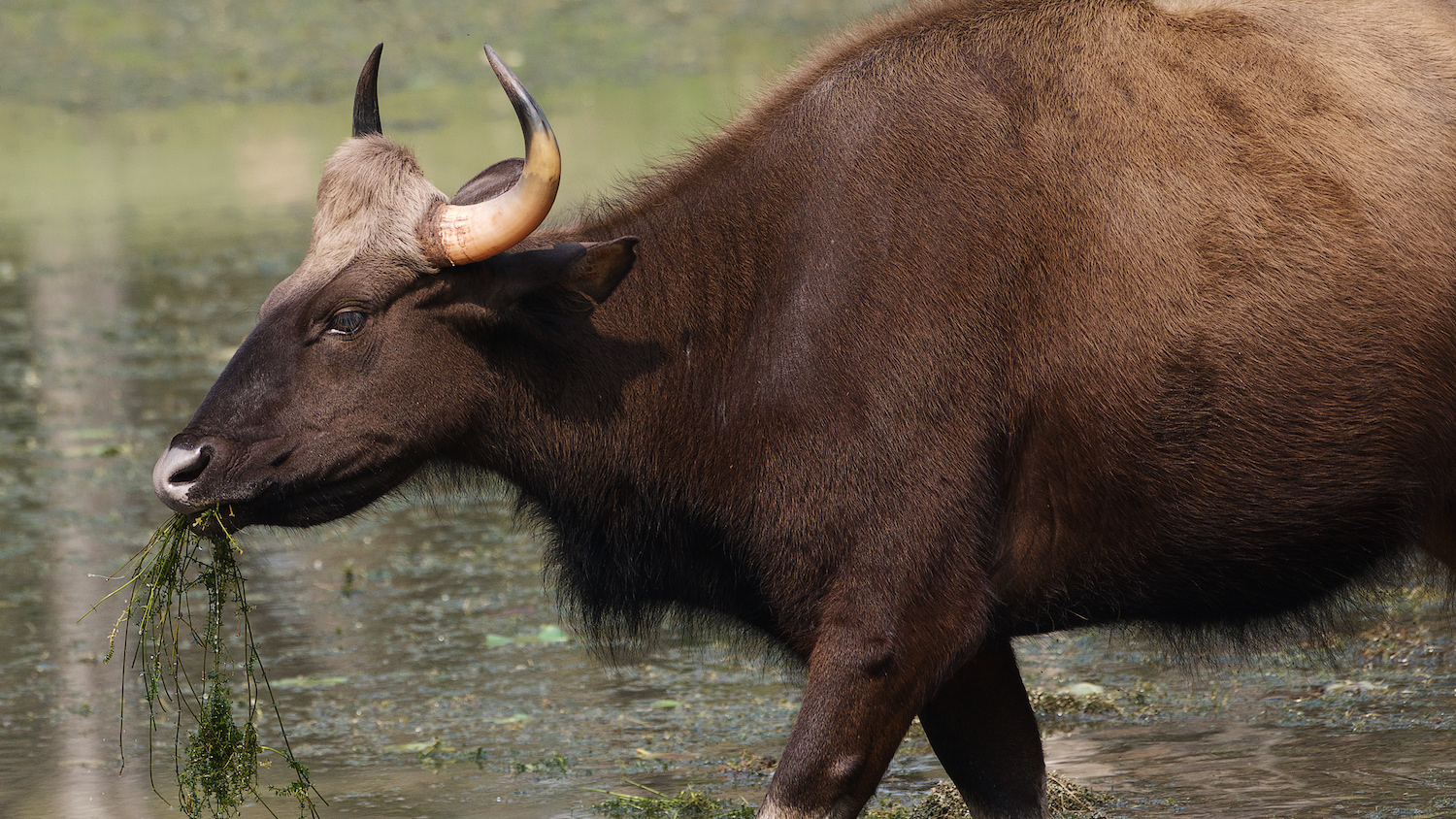
The Indian Bison or Gaur (Bos gaurus)
Gaur feeding on plants growing in the shallow water of the lake.
Female Sambar Deer (Rusa unicolor) drinking water, whilst standing in the shallows of the lake.
A male Sambar Deer (with antlers) is smelling the female's rear, checking her scent for a distinctive odour that lets him know if she's ready to mate.
Male Sambar Deer (Rusa unicolor) following females trying to find one that's ready to mate.
A leopard, resting high on large rock is well-hidden by the trees and foliage, making it very difficult to get a good shot.
Hanuman Grey Langur (Semnopithecus entellus) is almost black when newborn and gray, tan, or brown as an adult.

Hanuman Grey Langur (Semnopithecus entellus)
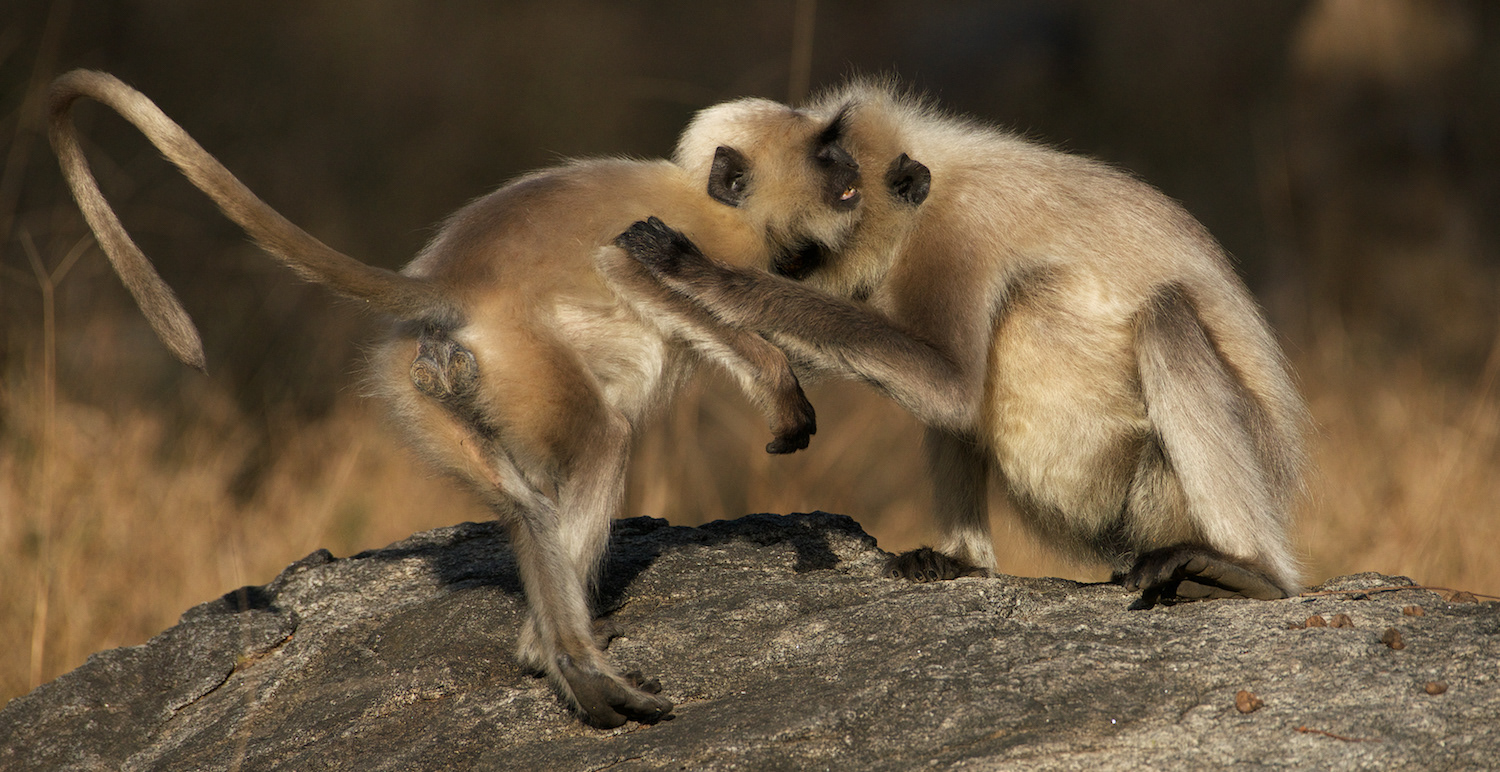
Hanuman Grey Langur (Semnopithecus entellus)
Langur monkeys play-fighting. Monkeys use play to avoid conflict and reduce group tension.
It was 6:30 am not long into our game-drive when we spotted a Leopard crossing the track well ahead of us. Luckily, it paused for a brief moment, looked back down the track at us, before disappearing into the forest.
Rhesus Macaque (Macaca mulatta) on the move with its youngster clinging on.
Young Rhesus Macaque climbing up a tree trunk.
Female Rhesus Macaque on the move, with her youngster hanging on whilst still suckling.
Bengal Tiger (Panthera tigris tigris)
Photographing tigers is extremely challenging. You often only get the briefest glimpse, as with this one, which was on the move through the tall grass. One minute there and the next minute gone! But seeing a tiger in the wild, no matter how brief, is always a privilege.
The Indian Wild Boar (Sus scrofa cristatus)
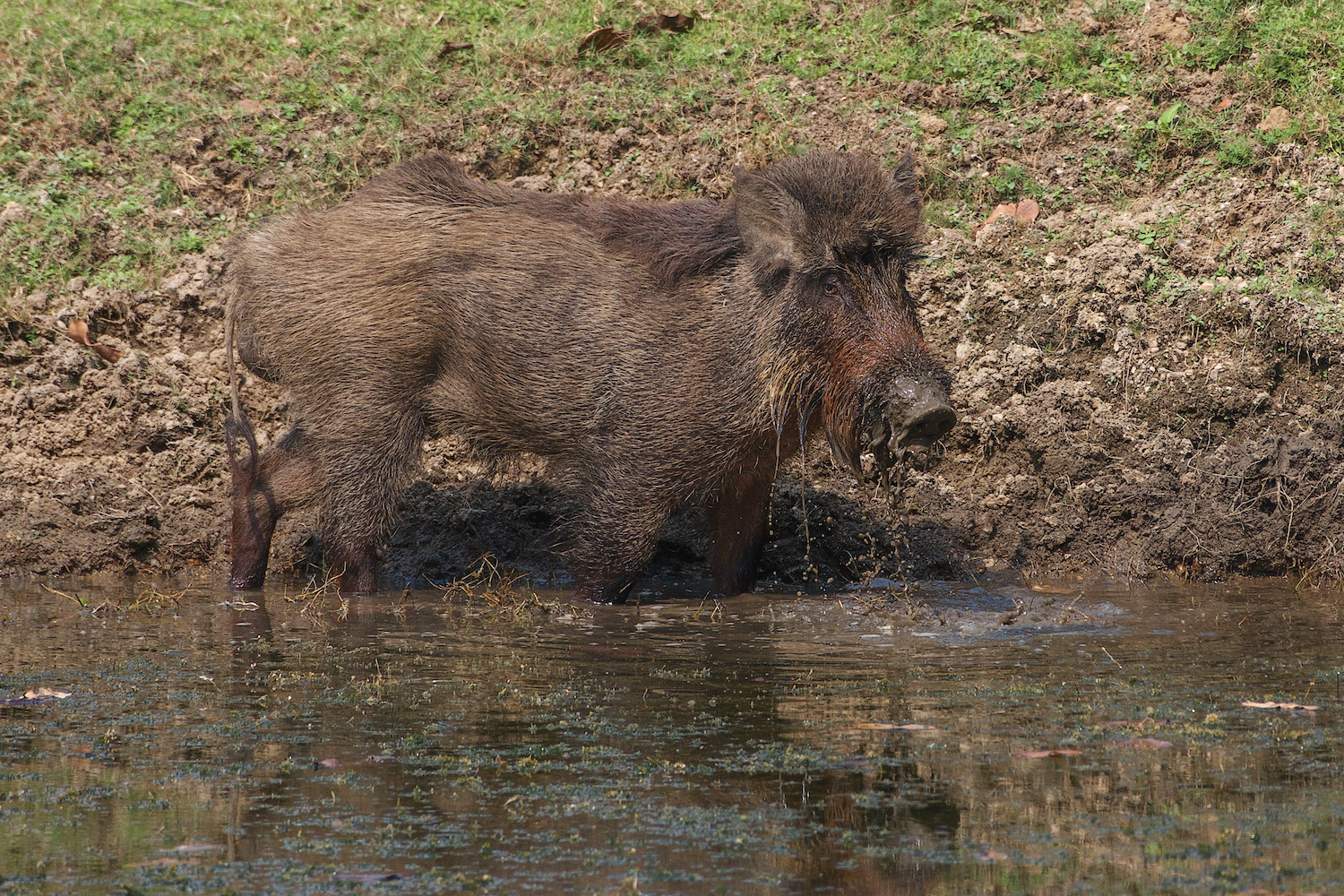
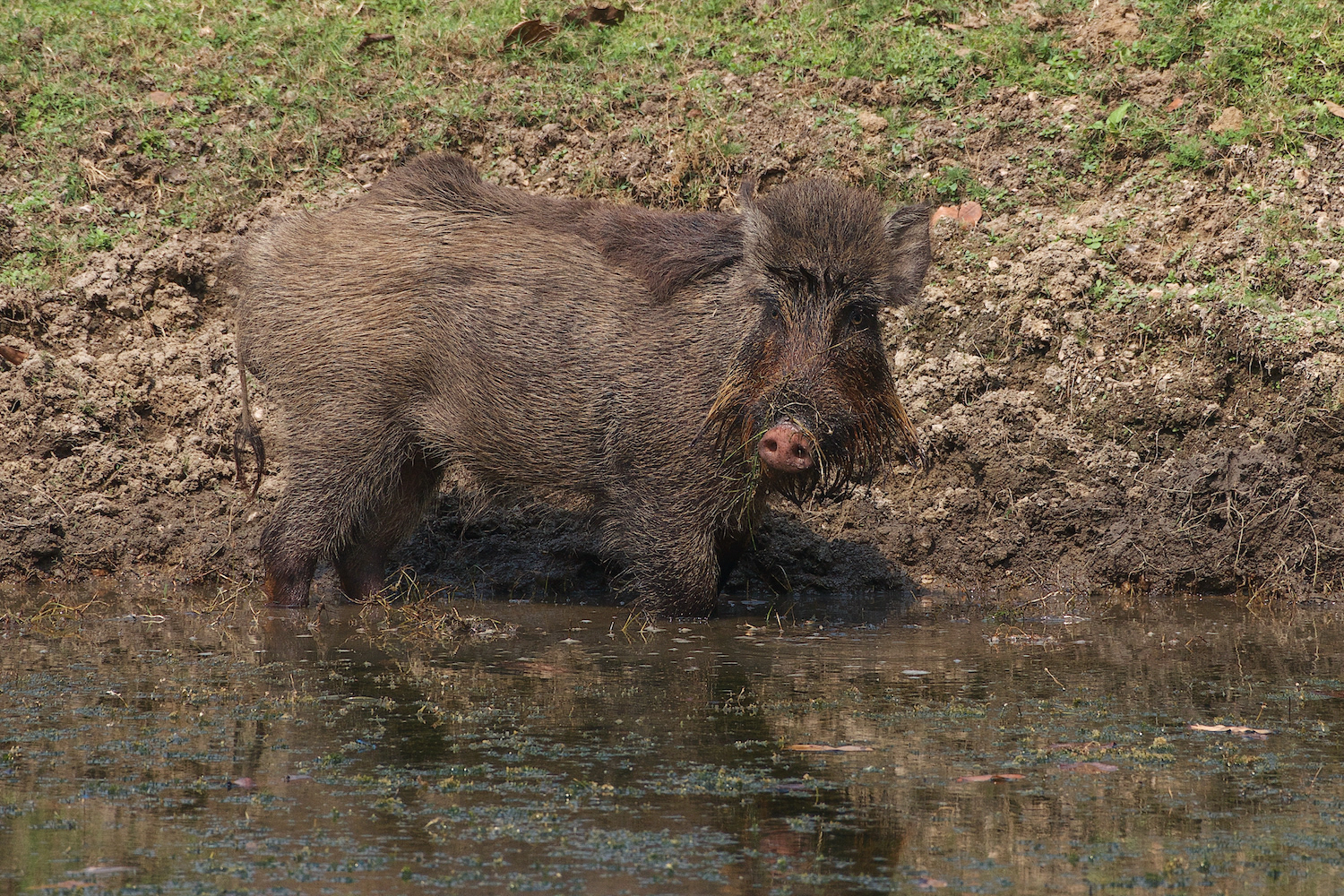
Indian Grey Hornbill (Ocyceros birostris)
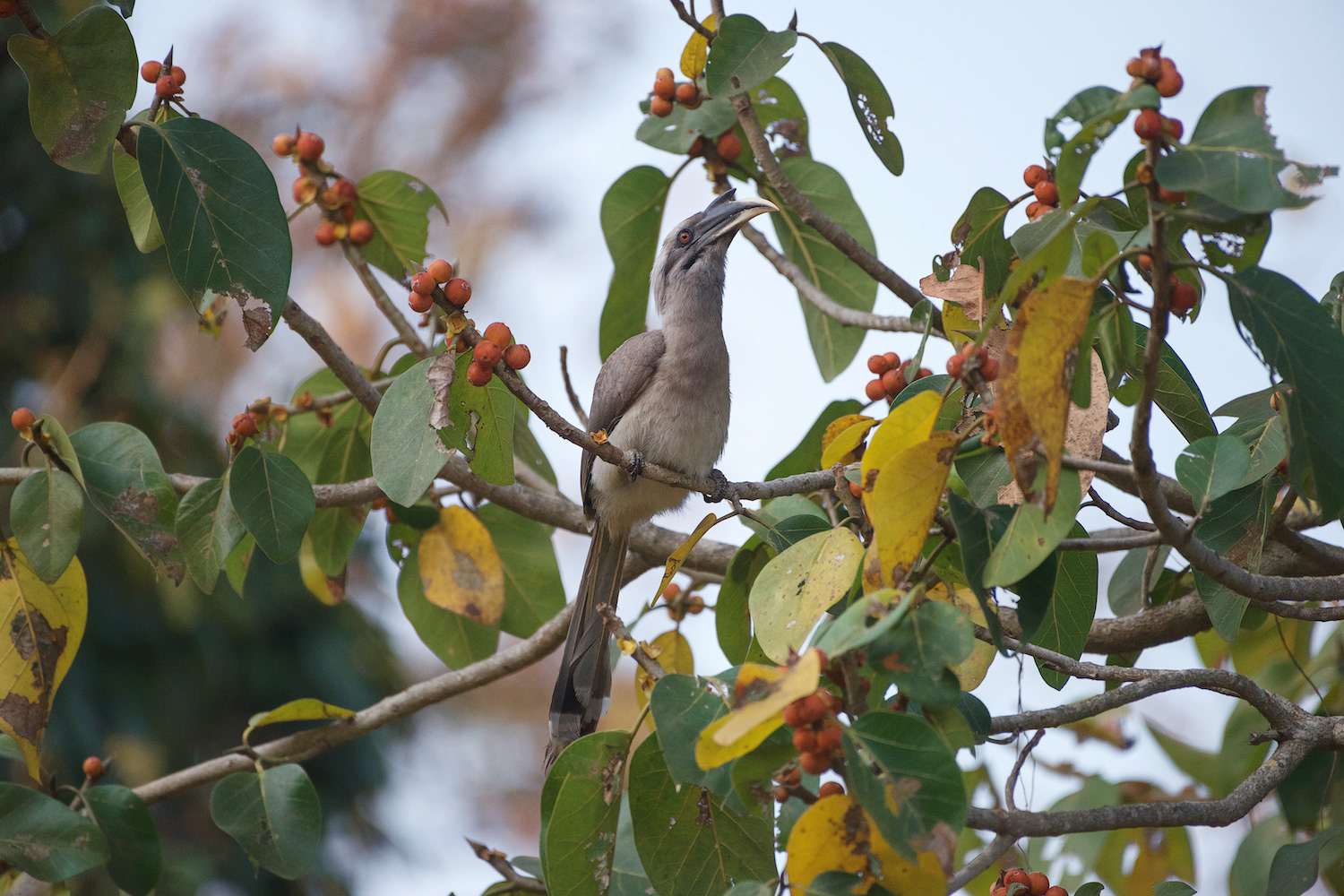
Indian Grey Hornbill (Ocyceros birostris)
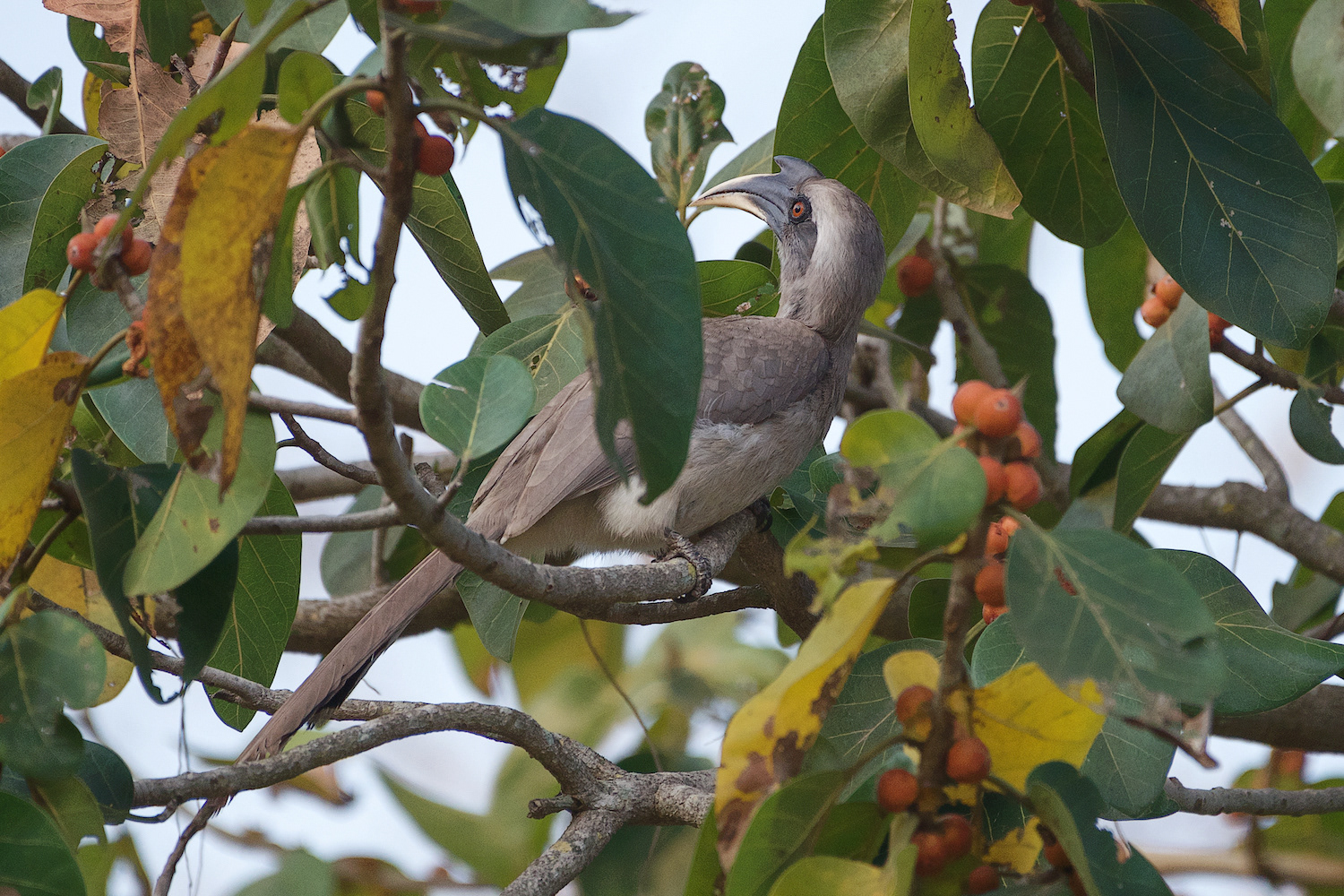
Indian Grey Hornbill (Ocyceros birostris)
Chital stags sparring.


Peacock (Pavo cristatus) crossing the road.
Peacock (Pavo cristatus) with tail down, showing its stunning tail feathers.
Beautiful tail feathers of a Peacock

Chital (Axis axis) also known as the spotted deer.
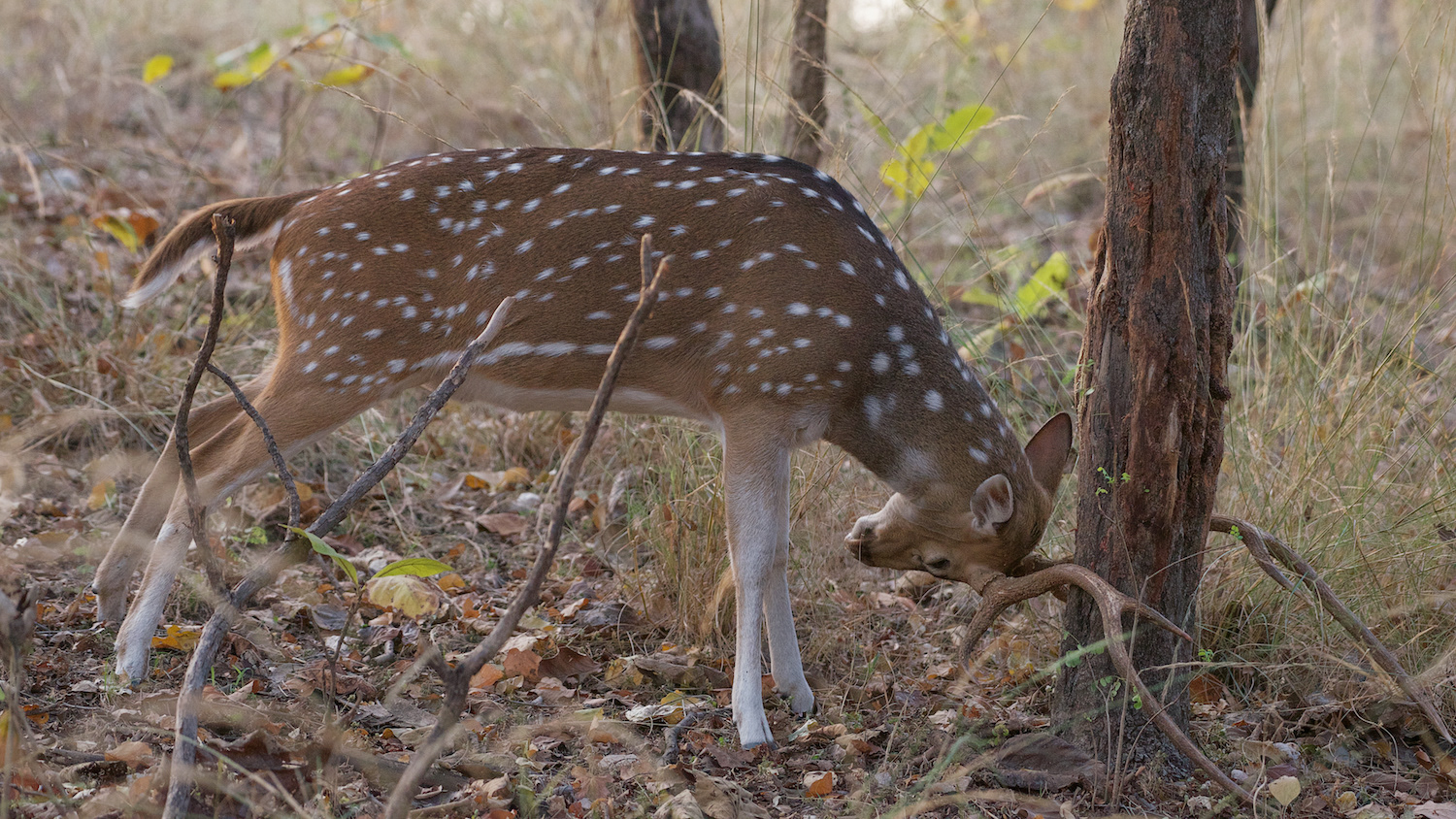
Chital (Axis axis) also known as the spotted deer.
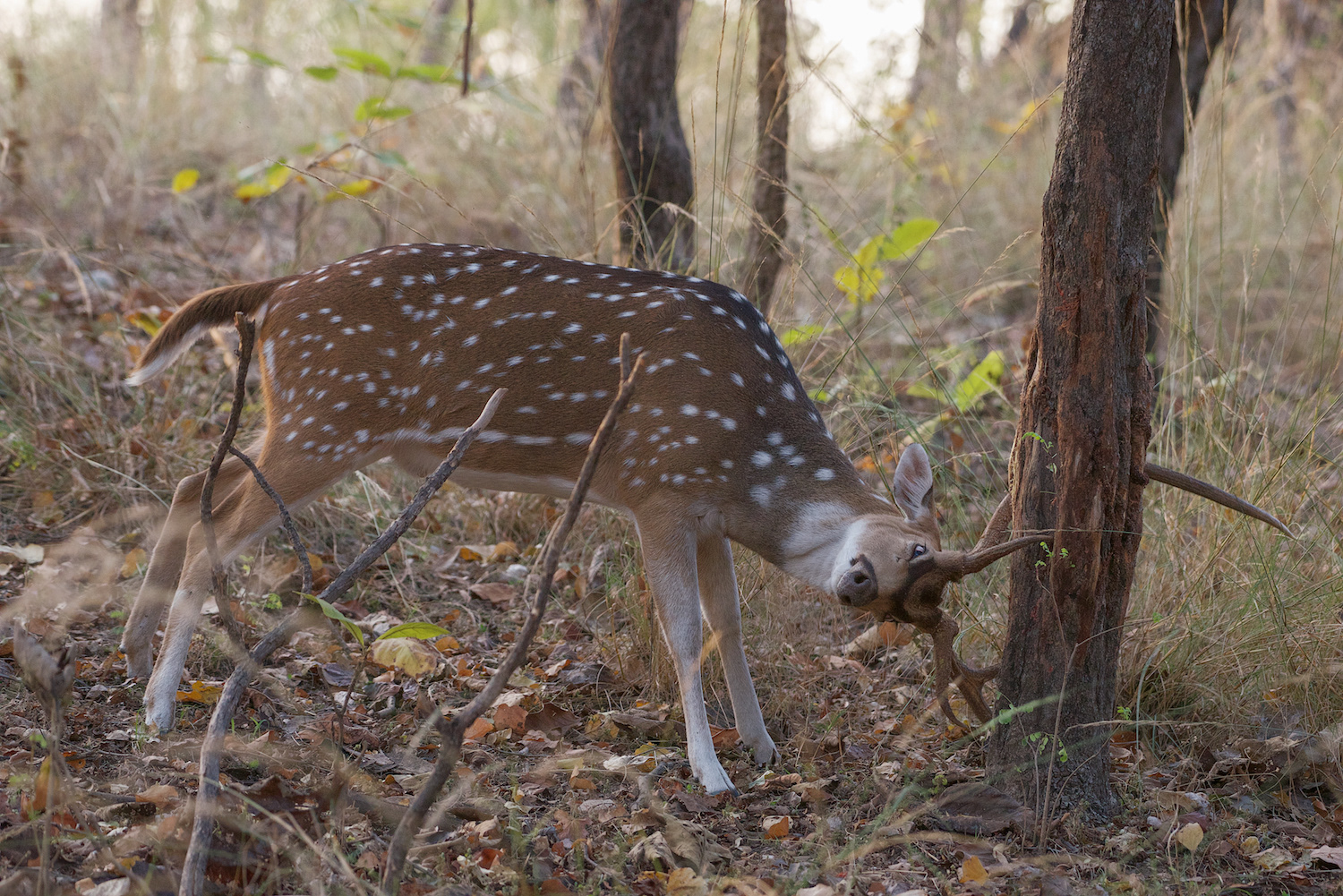
Chital (Axis axis) also known as the spotted deer.
Chital Stag trying to shed its antlers by rubbing them against a tree trunk. Antlers are shed and re-grown annually to coincide with the breeding season.
The Indian Roller (Coracias benghalensis)
Rose-ringed parakeets (Psittacula krameri)
Oriental Darter or Snake Bird (Anhinga melanogaster)
Peacock (Pavo cristatus)
Hanuman Grey Langur (Semnopithecus entellus)
Langur grooming session!
Baby Langur clings to its mother.
Pench National Park 2024
Photographs: ©Don Davies
